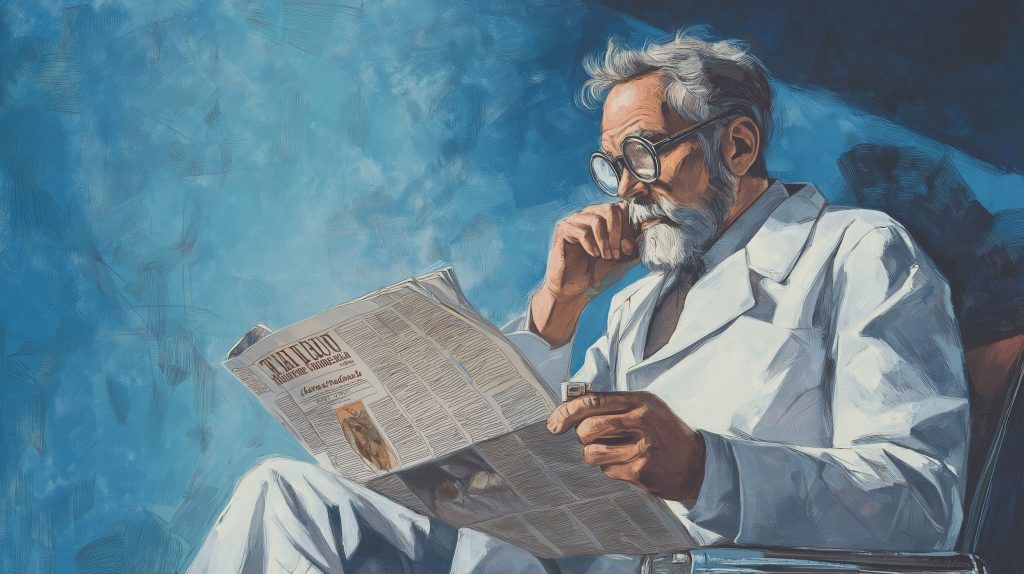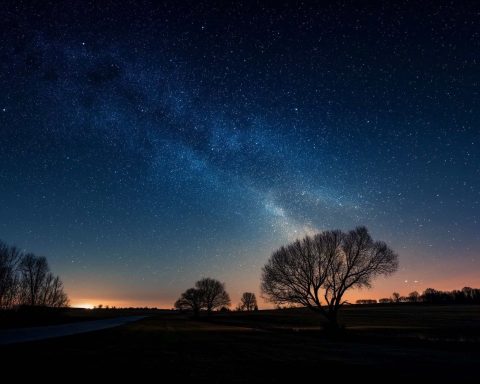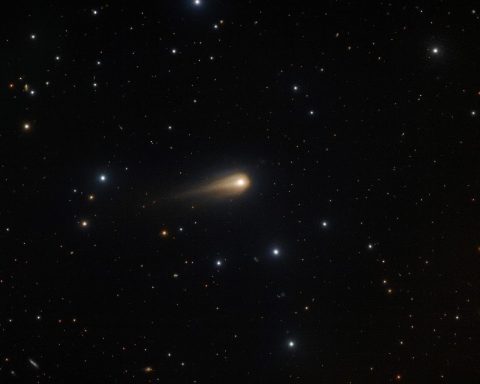- The Perseid meteor shower peaked on August 12–13, 2025, and on August 15–16 the Moon is in last quarter, about half-lit and rising late, providing darker evening skies.
- The Perseids remain active through August 23, 2025, with expert estimates of about 15 meteors per hour under moonlit conditions, meaning only roughly 10–20% of the usual 60–100 meteors per hour may be visible.
- Perseid earthgrazers can be seen starting around 9–10 PM local time toward the northeast as Perseus rises.
- The Kappa Cygnids peak around August 16, 2025 and typically produce only a few meteors per hour, perhaps up to about 3, with occasional bright fireballs; there is no unusual outburst expected in 2025.
- The Kappa Cygnid radiant lies near Kappa Cygni between Cygnus and Draco and stays above the horizon all night for mid‑northern latitudes, making a late-evening to pre-dawn watch worthwhile before moonrise.
- The Northern Lights outlook for August 15–16, 2025 is generally quiet, with no major geomagnetic storms expected (Kp around 3), so any auroras will likely be faint and confined to polar regions.
- Solar Cycle 25 is near its predicted maximum in 2025, increasing sunspots and coronal mass ejections and raising the odds of bright auroras.
- Venus and Jupiter form a bright dawn pairing in the eastern sky around August 15–16, remaining a few degrees apart before sunrise; binoculars may reveal up to four of Jupiter’s moons.
- Mercury will reach greatest western elongation on August 19, 2025 at about magnitude +0.3, and on August 15–16 it will be very low in the east roughly 30–45 minutes before sunrise.
- The International Space Station will appear as a bright, fast-moving point for about 4–6 minutes per pass, with NASA’s Spot the Station providing timing, and SpaceX’s Starlink trains may also be visible as a string of bright lights after launches, with more than 8,000 Starlink satellites in orbit as of August 1, 2025.
Get ready, skywatchers – the nights of August 15–16, 2025 are packed with celestial shows. From shooting star outbursts and potential aurora glows to brilliant planetary alignments and even high-flying satellites, this weekend offers something for everyone. Below is your in-depth guide to all the skywatch alerts and phenomena to expect, with expert insights, viewing tips on when and where to look, and links to official sources (NASA, NOAA, etc.) for more information.
Perseid Meteor Shower & Fiery “Shooting Stars”
Meteor Madness Continues: The famous Perseid meteor shower – one of the year’s most beloved showers – peaked a few nights ago (Aug 12–13) under the glare of a bright waning gibbous Moon [1] [2]. While the nearly 84%-full moon during the peak washed out many fainter meteors [3] [4], stargazers still reported plenty of bright Perseid fireballs piercing the moonlight [5] [6]. According to NASA, “a few bright meteors may still be seen in the pre-dawn hours” even with suboptimal conditions [7]. The good news is that by Aug 15–16, the Moon is in its last quarter phase (about half-lit) and rises late at night, so evening skies will be darker for meteor-watchers.
What to Expect: The Perseids remain active until August 23 [8], so you can still catch shooting stars this weekend, though at lower rates than the peak. Meteor expert Robert Lunsford of the American Meteor Society estimates that under the moonlit conditions of 2025, “the best rates will probably be near 15 [meteors] per hour as dim meteors make up a majority of the activity” [9]. In other words, only about 10–20% of the usual 60–100 meteors/hour might be visible through the remaining moonlight [10]. Still, any Perseid meteor you do see is worth it – these tend to be bright, fast, and occasionally leave persistent trains of glowing smoke [11].
Expert Tip: “You can watch for long Perseid earthgrazers as soon as it gets dark until the moon begins to interfere,” Lunsford advises [12]. An earthgrazer is a long, slow meteor that skims the atmosphere at a shallow angle, often seen when the radiant is low. So head out around 9–10 PM local time and look toward the northeast sky (where the constellation Perseus rises) to try spotting a few of these graceful early-evening Perseids before moonrise. Later in the night, the highest meteor counts will occur in the pre-dawn hours (after midnight until dawn) when Perseus is high in the sky [13] – just remember to keep the moon (rising around midnight) at your back to improve contrast [14].
Kappa Cygnid Fireballs: In addition to the Perseids, mid-August brings a second, lesser-known meteor shower: the Kappa Cygnids. Peaking around August 16, the Kappa Cygnids usually produce only a handful of meteors (perhaps up to ~3 per hour under dark skies) [15]. Why pay attention then? Because this quiet shower is “famous for producing bright, slow-moving fireballs that can surprise even seasoned stargazers,” according to a Star Walk astronomy guide [16] [17]. In other words, most of the time you won’t see much – but any meteor you do catch from this shower could be a spectacular, leisurely streak across the sky. This year, viewing conditions are favorable: the Kappa Cygnid peak coincides with the dim last-quarter Moon, so if you watch in the evening before moonrise, there will be no moonlight interference [18]. Look toward the constellation Cygnus (the Swan), high overhead in the summer sky after dusk. The Kappa Cygnid radiant (near the star Kappa Cygni, between Cygnus and Draco) stays above the horizon all night for mid-northern latitudes [19]. Even though only a few meteors may appear, be patient – the reward could be a brilliant fireball streaking out of the Summer Triangle. (Note: astronomers say no unusual outburst of Kappa Cygnids is expected in 2025, as the last known burst was in 2021 [20].)
Meteor Watching Tips: To maximize your meteor sightings this weekend, find the darkest sky possible (far from city lights) and give your eyes time to adapt to the darkness (about 20 minutes) [21] [22]. Lie back on a blanket or chair and scan as much of the sky as possible – meteors can appear in any part of the sky, even if their trails trace back to Perseus or Cygnus. Dress warmly and bring along some patience and perhaps a hot drink [23]. And don’t forget to make a wish if you see a shooting star!
Auroras and Space Weather Outlook
Northern Lights Season Begins: Mid-August marks a turning point for aurora enthusiasts. In the high latitudes of the Northern Hemisphere, the long summer daylight is finally receding – which means dark nights are returning and so are the Auroras. In fact, astronomers note that the first aurora sightings of the new season typically occur by the 2nd or 3rd week of August in the Arctic [24]. By late August, aurora tour operators report a “stronger-than-average northern lights season” kicking off in places like Iceland, Greenland, and northern Canada [25]. In other words, if you live in or are visiting far-northern locales, now is the time to keep an eye on the northern horizon on clear, dark nights!
Solar Cycle at Maximum: The Sun itself is very active this year – Solar Cycle 25 is near its predicted peak in late 2024 to mid 2025. (A NOAA/NASA panel forecasted the cycle’s maximum sunspot activity to occur around July 2025 [26], and indeed solar activity in recent months has surpassed the last cycle’s peak.) During a solar maximum we see more frequent sunspots, solar flares, and coronal mass ejections (CMEs) – the explosive eruptions that trigger geomagnetic storms and auroras on Earth [27] [28]. “Scientists and astronomers have predicted that 2025 will coincide with a solar maximum, marking a period of increased solar activity and storms,” notes one aurora expedition team, which “bodes well for travelers hoping to catch a glimpse of the Northern Lights in 2025” [29]. In plain terms: the odds of bright auroras are the highest they’ve been in over a decade, and the auroras that do occur are likely to be more intense and visible farther south than during the solar minimum years [30] [31].
This Weekend’s Forecast: So will we get an auroral display on Aug 15–16? Probably only if you’re in high latitudes, and even then, minor. According to the U.S. NOAA Space Weather Prediction Center (SWPC), no major geomagnetic storms are expected around August 15–16 [32]. The official 3-day forecast calls for quiet to unsettled geomagnetic conditions (Kp index peaking around 3, which is below the G1 storm level) [33] [34]. SWPC notes “No G1 (Minor) or greater geomagnetic storms are expected. No significant transient or recurrent solar wind features are forecast.” [35] [36] In other words, there isn’t a known CME or solar wind shock due to hit Earth during the weekend. So any auroras will likely be modest and confined to polar regions (Alaska, northern Canada, Scandinavia, etc.). The Aurora Oval might graze far northern U.S. states or Scotland if Kp reaches 3, but widespread mid-latitude auroras are not anticipated with such low activity.
That said, surprises can happen. The sun is near peak activity, so an unexpected solar flare or CME could always erupt with little warning. NOAA gives about a 30–35% chance of minor solar flares (R1–R2 radio blackout levels) on any given day this weekend [37] – meaning active sunspot regions could produce an M-class flare that briefly disrupts radio and possibly sparks auroral activity. (The chance of a major X-class flare is low, ~5% [38].) Bottom line: Keep an eye on space weather alerts – if you hear of a surprise solar eruption, the aurora forecast could change quickly. Otherwise, for Aug 15–16 the space weather outlook is quiet, and any Northern Lights will likely be faint and only visible in the highest latitudes under clear, dark skies [39].
Aurora Watching Tips: If you’re in an aurora-visible zone (e.g. Alaska, Canada, Northern Europe), check the Kp index or aurora forecasts from NOAA or sites like SpaceWeatherLive. A Kp of 3 means auroras around the Arctic Circle; Kp 5 (G1) or above is typically needed for northern U.S./UK. Since no strong storms are forecast, focus on dark, clear skies away from light pollution, and look north toward the horizon. Sometimes cameras can pick up aurora glow even if it’s too faint for the naked eye, so consider doing some long-exposure photos if you suspect activity. With solar max conditions, even a minor uptick in the solar wind could paint the sky green. As one science writer put it after a recent storm, millions got their “first view of the aurora” this year thanks to the strongest geomagnetic storm in 20 years [40] – proof that when the sun acts up, the auroras can be truly unforgettable.
Planetary Alignments and Highlights
The planets are putting on a show of their own this weekend, punctuated by a spectacular pairing of the two brightest planets in our sky:
Venus and Jupiter – A Dazzling Dawn Duo: Early risers are in for a treat as Venus and Jupiter continue their close conjunction dance in the pre-dawn hours. Around August 11–12, these two brilliant planets appeared to nearly “graze” each other in the sky – coming within about 1° apart (roughly a pinky-finger’s width at arm’s length) [41] [42]. “Jupiter and Venus shine brightly in the mornings as they appear to graze each other in the sky on the 11th and 12th,” NASA noted in this month’s skywatching bulletin [43]. By Aug 15–16, Venus and Jupiter are still relatively close together in the east before sunrise, creating a striking celestial tableau. They will be a few degrees apart (gradually separating each day), but still easy to spot side-by-side – Venus is the blazingly bright “Morning Star” and Jupiter the second-brightest point nearby. Look east about 2–3 hours before sunrise (around 3–4 AM local time); the two planets will rise together and climb higher until dawn washes them out [44] [45]. This pair is unmistakable even in city skies – Venus outshines every star, and Jupiter, though dimmer than Venus, is as bright as a high-intensity star. If you have binoculars or a small telescope, train it on Jupiter to possibly glimpse up to four of its moons, and note the vivid crescent phase of Venus. These worlds won’t appear this close again for some time, so don’t miss the planetary meetup lighting up the morning of Aug 15–16!
(Bonus: Mark your calendar for early next week: on Aug 19–20, a slender crescent Moon will join Venus and Jupiter at dawn, forming a beautiful triangle in the sky [46]. Mercury will be nearby too – see below – meaning four celestial objects will be visible before sunrise. Aug 19 in particular is the best morning to catch Mercury, Venus, Jupiter, and the Moon all together [47].)
Mercury’s Elusive Appearance: The innermost planet Mercury is notoriously tricky to spot, but mid-to-late August offers a decent opportunity. Mercury is emerging from the Sun’s glare and will reach greatest western elongation on Aug 19 (its farthest separation from the Sun in the morning sky) [48]. Around that date, Mercury will shine at around magnitude +0.3 and be visible for roughly an hour before sunrise – low above the eastern horizon [49]. By the weekend of Aug 15–16, Mercury is just beginning to make its presence known: look very low in the east about 30–45 minutes before sunrise. You might need binoculars and an unobstructed view (like a flat horizon), since Mercury will be less than ~10° above the horizon [50] [51]. It will brighten and rise a little higher each morning, heading toward that Aug 19 optimum. Around that peak date, observers at mid-northern latitudes might spot all three morning planets – Mercury, Venus, and Jupiter – aligned in the eastern sky in twilight, joined by the thin Moon [52]. Seeing Mercury is a small badge of honor for skywatchers, so if you’ve never seen it, give it a try this week! (Pro tip: Mercury will appear to the lower left of Venus; use brilliant Venus as a guide and scan near the horizon below it.)
Saturn Shines All Night: Over in the evening sky, Saturn is the planet to watch. The ringed gas giant is nearing its yearly opposition (which will occur in late September 2025), meaning it’s already bright and visible for most of the night. In mid-August, Saturn rises in the east by around 9–10 PM local time and is best observed in the late night and early morning hours [53]. By dawn, Saturn will be high in the south or southwest. You can find it glowing with a steady, yellowish light among the stars of Aquarius (not far from the Great Square of Pegasus rising later at night). While Saturn isn’t as eye-catchingly bright as Venus or Jupiter, it’s about as bright as the brightest stars and stands out because it doesn’t twinkle much. If you have a telescope, even a small one, turn it toward Saturn – you’ll be rewarded with a view of its magnificent rings and maybe a moon or two (Titan, Saturn’s largest moon, can be spotted as a dot nearby in decent scopes). Around 11 PM–midnight this weekend, the waning gibbous Moon will actually be rising in the same general area of sky as Saturn, so you might see the Moon and Saturn “tango” together across the sky until dawn (they were at their closest on Aug 11) [54]. The bright Moon will be a bit of a glare next to Saturn on these nights, but on the flip side, it makes Saturn easy to locate – look for the “star” just to the right or above the Moon on Aug 15–16.
Mars and Others:Mars is technically also in the night sky, but it’s now a fading ember low in the west after sunset. Mars has been getting farther from Earth and dimmer; by mid-August it’s only about magnitude +1.7 (comparable to the weaker stars of the Big Dipper) [55]. If you have a clear view of the western horizon, you might glimpse Mars as a tiny orange-red dot very low in twilight, about 30–60 minutes after sunset. It will set shortly thereafter. (Mars will soon disappear behind the Sun – it reaches conjunction next month – and will re-emerge in the morning sky later next year.)
Further out, Uranus and Neptune are up in the late-night and pre-dawn hours (Neptune rises by ~10 PM, Uranus by midnight). These outer planets require binoculars or a telescope to spot, but if you’re a seasoned observer, you’ll find Neptune in Aquarius (mag ~7.8) and Uranus in Aries (mag ~5.7) in the early morning sky. Fun fact: Neptune is near Saturn in the sky right now – it actually hovers just a few degrees above Saturn – but at magnitude 7.8 you won’t see Neptune without optical aid [56]. If you do have a telescope handy while observing Saturn, try to find Neptune as a faint bluish “star” in the same general area.
Satellites in Sight: ISS Flyovers & Starlink Trains
Celestial phenomena aren’t limited to natural objects – human-made satellites often put on their own mini light-shows for skywatchers:
International Space Station (ISS): The ISS, our orbiting laboratory, is one of the brightest objects in the night sky and a favorite target for casual stargazers. In fact, when it’s overhead and reflecting sunlight, the ISS typically outshines every star and even Jupiter – it’s often the brightest point of light in the sky aside from the Moon [57]. To the naked eye, it appears as a fast-moving, steady bright light gliding across the sky (no blinking lights, unlike aircraft). It takes only ~4–6 minutes to cross the sky when visible, zipping along at 17,500 mph about 250 miles above Earth [58]! The ISS orbits Earth 16 times a day, which means there are multiple viewing opportunities per week for most locations [59] [60]. Sightings occur either in the hour or two after sunset or before sunrise, when the observer is in darkness but the ISS is still catching sunlight – that contrast makes it shine brilliantly against the night sky [61] [62].
When and How to See the ISS: Precise viewing times depend on your location, but don’t worry – NASA has made it easy. Check out NASA’s “Spot the Station” service, which provides upcoming sighting timings for any location [63]. You can even sign up for email or text alerts, or download the Spot The Station app, to get notified whenever the ISS will pass overhead in your area [64] [65]. Generally, for mid-northern latitudes in August, there may be several good ISS passes in the early morning hours. For example, if you’re out before dawn watching planets, you might catch the ISS suddenly appearing and arcing across the pre-dawn sky. Pro tip: The ISS will appear in the west or northwest and travel eastward, or vice versa, depending on the pass – the alert will tell you which direction it enters and leaves. It usually appears about 10° above the horizon, climbs to some maximum height (often 40–60° up, sometimes it goes nearly overhead), then fades out as it enters Earth’s shadow. It does not blink or change color – a steady white-gold light is what you’ll see. If you have kids or friends with you, make it a fun challenge to spot “the flying space station”. As NASA says, the ISS’s orbit “passes over more than 90% of Earth’s population” [66], so chances are, if your skies are clear this weekend, the ISS will be somewhere in them at some point! (Check those Spot-the-Station times to know when.)
Starlink Satellite “Trains”: There’s a new phenomenon in the night sky in recent years that often catches people by surprise: the Starlink satellite train. After SpaceX launches a batch of Starlink internet satellites, they deploy in a line and can be seen as a strange string of bright, evenly spaced lights moving across the sky – a sight so uncanny that many who witness it mistake it for a fleet of UFOs [67] [68]. If a Falcon 9 Starlink launch occurred a few days prior, be on the lookout: “On clear nights, you may spot these satellites streaking across the sky, resembling a string of bright lights,” explains Space.com’s skywatching columnist [69]. The dazzling spectacle is best seen in the days immediately following a launch, when the satellites are still in low orbit and clustered together [70]. They typically appear shortly after sunset or just before sunrise – similar to the ISS – when they’re illuminated by the Sun against a dark sky [71]. As they ascend to their operational orbits ~550 km high, the satellites spread out and dim, so the “train” effect is temporary [72] [73].
To catch a Starlink train, you’ll need to know if a launch has happened recently (in August 2025, SpaceX launches are quite frequent). As of August 1, 2025, there were over 8,000 Starlink satellites in orbit [74], and launches continue regularly – meaning there’s a decent chance some batch is freshly launched this month. You can use online trackers (like “FindStarlink.com” or various stargazing apps) to get predictions for your area [75]. If you do see a line of lights, don’t panic – you’re witnessing cutting-edge tech in action. The Starlink train will look like a pearls-on-a-string line moving steadily across the stars. Enjoy it while it lasts, because within a few days the satellites will disperse and become almost invisible to the naked eye [76] [77]. (Also note: SpaceX has been trying to reduce Starlink brightness with visors, so newer satellites aren’t as bright as the early ones [78]. But right after launch, they can still be very noticeable.)
Other Satellites: Besides the ISS and Starlinks, countless other satellites may flare or glint in the night. For instance, Iridium satellites in the past were famous for brief, bright flares – but most of those have been retired. Still, you might catch a random satellite moving across the sky on any clear night. One fun target is China’s Tiangong space station, which can also be visible at times and is only slightly dimmer than the ISS. Tiangong passes are less frequent for a given location, but worth watching for if listed in satellite prediction apps. Additionally, keep an eye out for “fast walkers” – faint, speedy satellites in low orbit – and for occasional satellite flare-ups when solar panels catch the Sun at just the right angle.
Observation Guide: Maximizing Your Weekend Skywatching
To wrap up, here are some quick pointers to help you enjoy the August 15–16 sky show:
- Timing is everything: Plan around the key times – early evenings (9–11 PM) for potential Perseid earthgrazers and dark-sky meteor viewing before the Moon rises; late night (after midnight) for higher meteor rates (with some moonlight) and for Saturn watching; pre-dawn (3–5 AM) for the Venus-Jupiter pairing and Mercury low on the horizon, as well as any ISS or Starlink passes that might occur then. The Moon rises around midnight on these dates and will be at half phase on Aug 16, so skies are darkest in the evening and get brighter later at night.
- Direction to look:
- For meteors, get a comfortable all-sky view. Perseids will appear to radiate from the northeast (Perseus) [79] and Kappa Cygnids from overhead (Cygnus), but meteors can streak anywhere – so a lounge chair to gaze up is ideal.
- For Venus & Jupiter, look due east before dawn – they’ll be unmistakable, fairly low at first and rising higher toward sunrise [80]. Mercury will be just above the east-northeast horizon in very early twilight (use binoculars).
- For Saturn, look southeast to south by midnight; by dawn it will be toward the southwest. It’s near the aquarius–capricornus border area of sky.
- For a possible aurora, those in high latitudes should watch the northern sky for any greenish or reddish glows. Auroras can appear as low on the horizon or overhead curtains if a storm strengthens.
- For ISS or satellites, the direction varies by pass – but the ISS often comes from the northwest or southwest and heads roughly eastward. Check the specific pass details provided by NASA’s Spot the Station (e.g., “appears WNW, disappears SE”) and be outside a few minutes before that time [81].
- Resources: Utilize smartphone apps and websites: planetarium apps can identify planets and radiants; meteor shower apps can set reminders for meteor peaks; Spot the Station (NASA) gives ISS times [82]; and space weather apps or NOAA’s SWPC site can give real-time Kp and solar flare alerts. If you want an aurora prediction, NOAA’s SWPC aurora dashboard or the University of Alaska’s aurora forecast can be handy (they’ll show the auroral oval and probability for your latitude).
- Stay safe and comfortable: If you’re heading to a remote dark-sky site, bring along essentials (flashlight with red filter, bug spray, warm layers, snacks, etc.). Let someone know where you are. For home observers, simply turning off house lights and giving yourself a dark adaptation period will improve what you see dramatically.
By following this guide, you’ll be well-prepared to enjoy the cosmic extravaganza of Aug 15–16, 2025. Whether it’s wishing on a Perseid fireball, catching the glow of the Northern Lights, marveling at a planetary meet-up, or waving at the astronauts aboard ISS, there’s plenty to look up for. Clear skies and happy skywatching!
Sources:
- NASA “What’s Up: August 2025” Skywatching Tips [83] [84]
- American Meteor Society – Meteor shower outlook and expert commentary [85] [86]
- Space.com – Perseids 2025 news and viewing advice [87] [88]
- EarthSky.org – Perseid meteor shower facts (2025) [89] [90]
- Star Walk (Vito Tech) – Kappa Cygnids 2025 guide [91] [92]
- TheAuroraZone.com – August 2025 aurora season note [93]
- Aurora Expeditions – Solar max 2025 aurora predictions [94]
- NOAA Space Weather Prediction Center – 3-day geomagnetic forecast (Aug 15–17, 2025) [95] [96]
- Travel+Leisure – August 2025 sky highlights (Mercury elongation, etc.) [97] [98]
- Space.com – Venus & Jupiter conjunction details [99]
- Space.com – ISS viewing and Spot-the-Station info [100] [101]
- Space.com – Starlink satellite train explainer [102] [103]
References
1. www.space.com, 2. www.space.com, 3. science.nasa.gov, 4. www.space.com, 5. www.space.com, 6. www.space.com, 7. science.nasa.gov, 8. www.amsmeteors.org, 9. www.space.com, 10. earthsky.org, 11. earthsky.org, 12. www.space.com, 13. www.space.com, 14. www.space.com, 15. starwalk.space, 16. starwalk.space, 17. starwalk.space, 18. starwalk.space, 19. starwalk.space, 20. starwalk.space, 21. starwalk.space, 22. starwalk.space, 23. starwalk.space, 24. www.theaurorazone.com, 25. www.travelandleisure.com, 26. www.swpc.noaa.gov, 27. www.aurora-expeditions.com, 28. www.space.com, 29. www.aurora-expeditions.com, 30. www.aurora-expeditions.com, 31. www.hurtigruten.com, 32. www.spaceweatherlive.com, 33. www.spaceweatherlive.com, 34. www.spaceweatherlive.com, 35. www.spaceweatherlive.com, 36. www.spaceweatherlive.com, 37. www.spaceweatherlive.com, 38. www.spaceweatherlive.com, 39. www.spaceweatherlive.com, 40. www.space.com, 41. science.nasa.gov, 42. earthsky.org, 43. science.nasa.gov, 44. www.travelandleisure.com, 45. www.travelandleisure.com, 46. science.nasa.gov, 47. www.travelandleisure.com, 48. www.travelandleisure.com, 49. www.travelandleisure.com, 50. science.nasa.gov, 51. science.nasa.gov, 52. www.travelandleisure.com, 53. science.nasa.gov, 54. www.travelandleisure.com, 55. science.nasa.gov, 56. www.travelandleisure.com, 57. www.space.com, 58. www.space.com, 59. www.nasa.gov, 60. www.space.com, 61. www.nasa.gov, 62. www.space.com, 63. www.space.com, 64. www.space.com, 65. www.nasa.gov, 66. www.space.com, 67. www.space.com, 68. www.space.com, 69. www.space.com, 70. www.space.com, 71. www.space.com, 72. www.space.com, 73. www.space.com, 74. www.space.com, 75. www.space.com, 76. www.space.com, 77. www.space.com, 78. www.space.com, 79. earthsky.org, 80. www.travelandleisure.com, 81. www.space.com, 82. www.space.com, 83. science.nasa.gov, 84. science.nasa.gov, 85. www.space.com, 86. www.space.com, 87. www.space.com, 88. www.space.com, 89. earthsky.org, 90. earthsky.org, 91. starwalk.space, 92. starwalk.space, 93. www.theaurorazone.com, 94. www.aurora-expeditions.com, 95. www.spaceweatherlive.com, 96. www.spaceweatherlive.com, 97. www.travelandleisure.com, 98. www.travelandleisure.com, 99. www.travelandleisure.com, 100. www.space.com, 101. www.space.com, 102. www.space.com, 103. www.space.com










